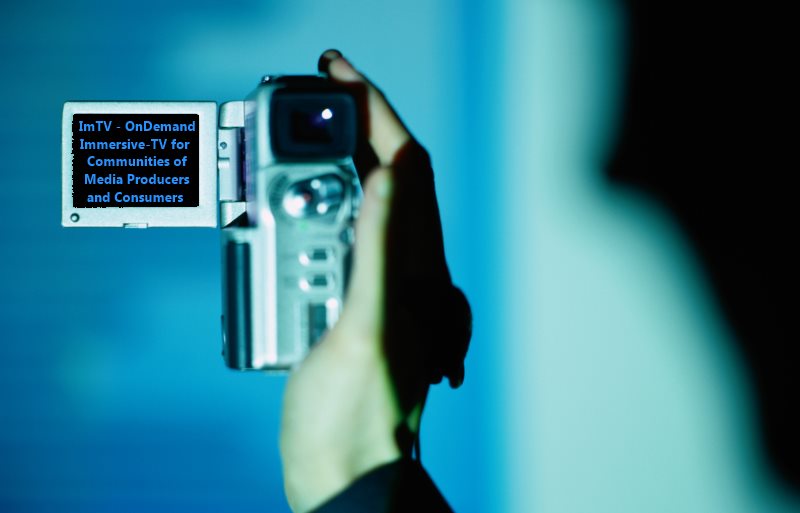INESC TEC participates in project that will change the consumption of audio-visual services in Portugal
Based on the concept of “immersive media,” the project ImTV - OnDemand Immersive-TV for Communities of Media Producers and Consumers – has collected information on the consumption of audio-visual services in Portugal, and created a number of tools with potential to give viewers a more active role. Moreover, the project has generated debates on public service media.
28th March 2014
Developed prototypes intensify interaction between the viewer and the content
The contribution of INESC TEC’s Telecommunications and Multimedia Unit (UTM) to the project materialised itself in various forms, which included developing prototypes that allow a more transparent interaction between viewers, contents and producers.
Project wants to improve viewing experience of users


Project ImTV started in July 2010, and its goal was to define new models for the legal distribution and consumption of television and audio-visual contents. Several entities, from research institutes to partners in the audio-visual scene, decided to join this project. INESC TEC in particular developed two prototypes: a collaborative annotation system and another system with personalised multiview spaces.
In the first case, and using concepts of crowdsourcing and games with a purpose, the system combines the descriptions of the user’s contents in an archive and implements mechanisms to validate information and to reward (awards) the players that make valid contributions. The second prototype generates personalised multiview spaces by presenting contents in an adaptive way and according to the user’s focus.
These two models “explore the concept of immersion from two points of view: the user actively participates in the creation of contents; the user has access to 3D contents in a personalised and adaptive way,” explains Paula Viana, manager of the project at UTM. At the same time, the technology matches the needs of the younger audience, introducing aspects such as participation, customisation and interaction, creating more attractive environments.


Thus, these features reflect a change in the paradigm of audio-visual content consumption: the viewer no longer has a passive role and interacts with the producer and other users, actively providing information.
UTM organises workshop and conference on media services
Other than the prototypes, the INESC TEC has also worked in different aspects related to the recommendation of contents in order to guarantee a more efficient and personalised access adapted to the context of use. “These results should also contribute to increase the user’s satisfaction and consequently customer loyalty,” added the UTM researcher who worked on the project together with Teresa Andrade, Artur Pimenta Alves, Márcio Soares, Tiago Costa and José Pedro Pinto.
The workshop “Immersive Media Experiences 2013” was also part of the project and it took place in Barcelona as part of the international conference “ACM Multimedia 2013”, one of the largest in the area. The workshop addressed scientific work on immersive media. Due to the success of this session, a second session is now being prepared for the ACM MM 2014, which will take place in Orlando, Florida, United States.


The RTP – Rádio e Televisão de Portugal (Portuguese television service) also joined this project, and a representative of the TV station participated in the conference “Public Service Media in a Small Country with a Global Culture”, organised by INESC TEC, to discuss issues on public service media and the new dimensions of the public broadcasting service.
INESC TEC’s contribution in the ImTV was also highlighted in various scientific papers published in international journals and in a special edition of the journal Multimedia Tools and Applications.
Project improves users’ viewing experience – interactive TV
As part of the project, the University of Texas at Austin (also partner in this project) also conducted a comparative study, called “Immersive television and the on-demand audience”, which focused on the ways audio-visual contents are consumed, namely in terms of the technology and sources of information used, the viewer’s habits, among others. The goal was to highlight the new dynamics in the area of entertainment media, focusing specifically on the ways that viewers relate to the TV or visual entertainment, particularly as regards the content generated by the user.


The study examined a sample of college students (both in Portugal and in Texas), and generally the results suggest that audiences are evolving towards a genre that creates and uses contents of different forms and in various locations. The data collected show, for example, that using a laptop as a form of entertainment is as common as using the TV.
The work also highlights a change in paradigm: “the ability to quickly upload or download contents, the ability to try different contents, and of sharing work in a simple and immediate way, seems to be the aspiration of contemporary culture,” according to the study, and thus it may have implications on the way content industries respond to the new preferences of people in terms of on-demand media.
Coordinated by the Foundation of the Faculty of Science and Technology (FFCT/FCT/UNL), besides INESC Porto, other partners of project ImTV included: the Cooperativa de Profissionais de Imagem CRL (Duvideo, image professionals), the Foundation for National Scientific Computing (FCCN), the RTP, the University of Texas at Austin (UT-Austin) and ZON Multimédia – Serviços de Telecomunicações e Multimédia, SGPS, S.A. (ZON, Telecommunications and Multimedia Services).
The INESC TEC researchers mentioned in this article are associated with the following partner institutions: INESC Porto, IPP and FEUP.
INESC TEC, March 2014


